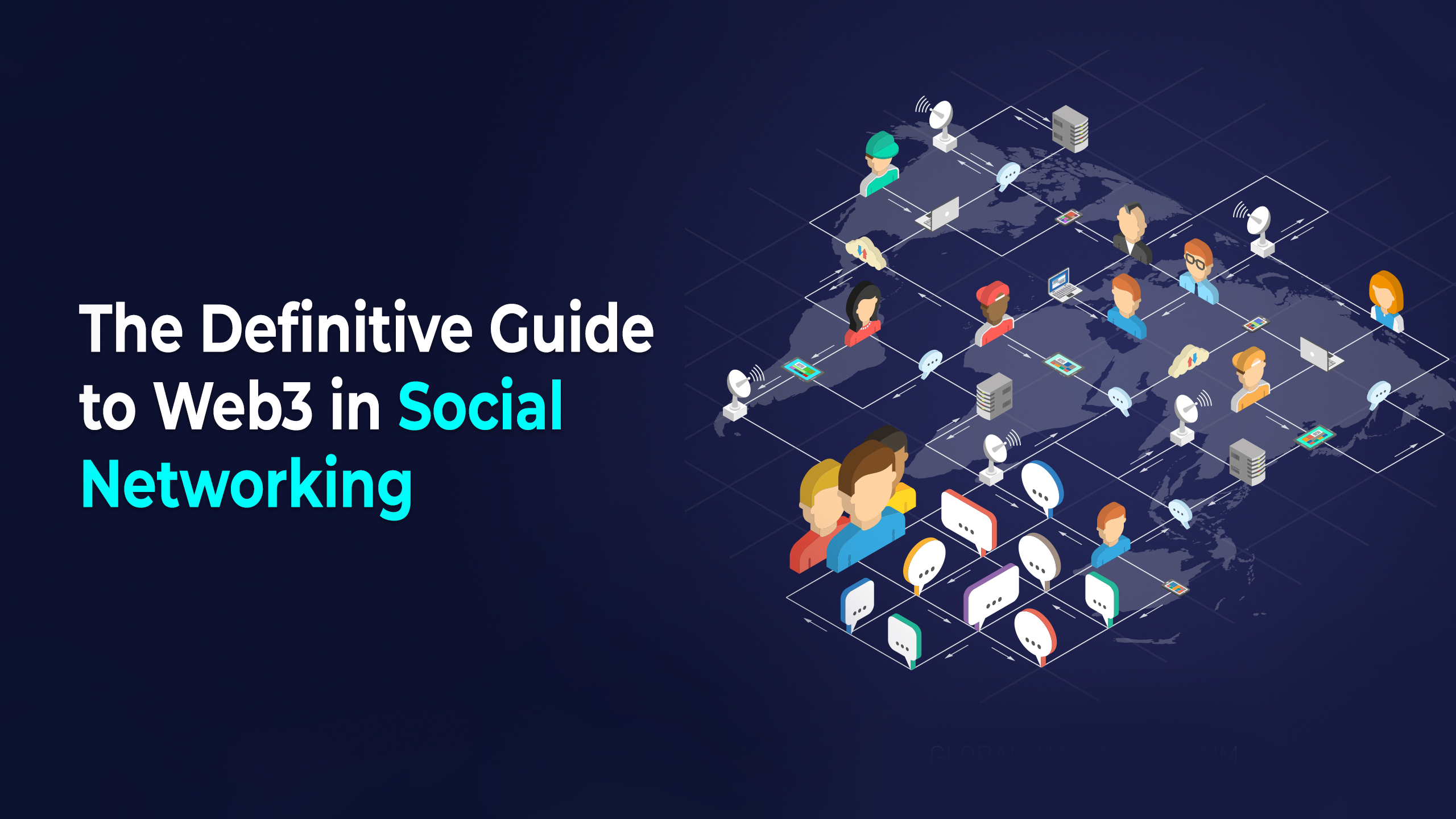We cannot neglect that web 2.0 has made a significant mark by connecting us with friends, family, and colleagues. With the help of social networking platforms like Facebook, WhatsApp, and others, geographically separated families and friends can communicate and share information about themselves through daily texts, calls, and video chats.
There is an estimation that there are nearly 4.2 billion social media users globally. In other words, it helps users establish themselves online. In the years since social media was created, it has helped many people promote their businesses, connect with different people, gain popularity, become rich, etc. There is, however, a price to be paid for all the benefits.
Read Also:- Web 2 vs Web 3: What is the difference?
There are many problems associated with traditional social networking sites, such as data breaches, censorship, privacy violations, server outages, de-platforming, and much more. They are causing far greater trouble despite all the free services they offer. As a result, many businesses and developers are turning to web3 social media platforms to solve these issues. Social networking will be explored through the use of web3, its benefits over web 2.0 social media platforms, and its advantages over web 2.0 social media platforms.
What is Social Networking? How Does it Differ from Social Media?
Despite their common interchangeability, social media and social networking are fundamentally different. Internet-based social media sites allow users to connect and interact with friends/family, colleagues, customers, or anyone. To create a network, personal and organizational relationships need to be built in an interactive environment.
However, social media are tools or platforms for social networking. There are a number several social media sites of web 2.0, such as Facebook, Instagram, Twitter, Discord, LinkedIn, Telegram, WhatsApp, and more, which let users connect and interact via texts, posts, and comments. Web-based applications or software are available to access social media via computers, phones, and tablets.
Four objectives are served by social networking:
Interacting – Through social networking, distance and time are no longer communication barriers. Another way to communicate with each other is through video communication technologies such as WhatsApp.
Sharing – Information, photos, videos, and other updates can be shared by geographically dispersed family and friends via social media sites.
Marketing – Companies can build brand awareness through social media by connecting with existing and potential customers.
Learning – Social networking also allows us to share job, study, and hobby information with our friends and family.
Web3 in Social Networking: Overview
Users and their data are not protected by Web 2.0 social networking, which is centralized. With full authority and control over user information, tech giants dominate the market. Users can’t control their content on social media platforms that use web 2.0. Those platforms are owned by tech giants that can delete anything they want.
Unlike the traditional web 2.0 social network, Web3 social networking represents a paradigm shift. This system aims to provide users with a decentralized social network ecosystem in which their data is owned and controlled by them. Videos, blogs, and scrolling through feeds are some of the most popular activities users do now. Despite generating large amounts of revenue from users, most of them do not benefit financially. Web3 can provide users with incentives and other benefits.
What are the Workings of Web3 Social Networks?
Unlike Ethereum and other cryptocurrencies, Web3 social networks are based on blockchain technology, an immutable digital ledger that powers Ethereum. The web3 social networks are based on blockchain and are therefore decentralized applications (dApps).
In dApps, smart contracts comprise the backend for social media applications and define their business logic. Many thousands of nodes worldwide participate in the peer-to-peer network that hosts these dApps. The entire network cannot be affected by a malfunctioning node. Due to this, the network will perform unhindered, promoting applications that are resistant to failure.
At present, there are several blockchain-powered web3 platforms that reward both creators and consumers. Rather than a set group of people, each of these web3 platforms benefits from its native tokens. Furthermore, these tokens can be purchased for access to specific features, tipping favorite content creators, and making in-app purchases.
Why Web3 Social Media Platforms?
Social networking sites like Web 2.0 put the interests of many users at risk, and social networking sites like Web3 can revolutionize the way people communicate and interact. Here are some ways in which web3 social networks are superior to web2.0 social networks.
Interoperability
Despite being only partially interoperable at present, web3 is slowly moving toward true interoperability. Web3 connects and communicates between every siloed blockchain environment. Sharing content, data, assets, and more between social media platforms facilitate better collaboration between users.
Open Source
In web3, data is stored on a decentralized, open, and permissionless blockchain. APIs cannot be changed or blocked by gatekeepers or censors. Furthermore, developers are no longer required to use other protocols as they can copy functionality instead. A web 2.0 application, however, is different. Developers were once prevented from building similar apps by Twitter shutting down its API.
Developers can fork web3’s open-source codebase to build an improved social media platform with much better functionality and user experience. The open-source code of web3 can be reused by anyone, and this can speed up the development process since it’s free.
User-owned Content
The content generated by users on web 2.0 social media platforms is not truly theirs. Platform owners own the entire content. In this way, traditional social media content and posts can be removed at any time. With web3 social media platforms, content lives on the blockchain, and no one else owns it. You can take your content with you if you decide to leave a particular platform for another that suits your needs better.
Free of Bots & Spammers
Thousands of accounts are created every day on Web 2.0 social media platforms, and not all of them are real. These accounts mostly consist of fakes, bots, or spammers. The purpose of many of these tricks is to manipulate you into clicking the wrong link so they can access your information to steal your money or sell it for a substantial profit. Web3 ensures that your data is secure and can only be accessed by you unless you grant permission for others to see it. In addition, blockchain technology makes it more difficult to create fake accounts since it promotes direct verification of identities and data.
Bottom Line
A gateway to the decentralized future can be seen in Web3 in social networking. We return control to the rightful owners, i.e., users, by removing the power of tech giants over our content and data. Web3 transforms users into products. Their data is theirs to control, monitor, and own, but they also have a right to participate in social media platforms. It expands the scope of social media by integrating components such as the digital ledger, NFTs, cryptocurrencies, and metaverse.
Get in touch with Web 3.0 India if you’re interested in building a web3 social media platform. We can make your dream project a reality with our expert developers.




